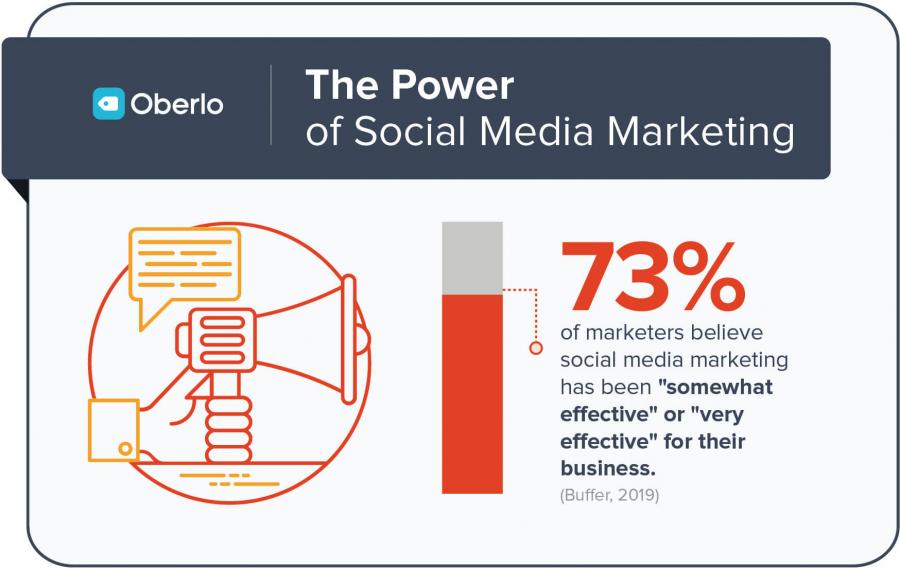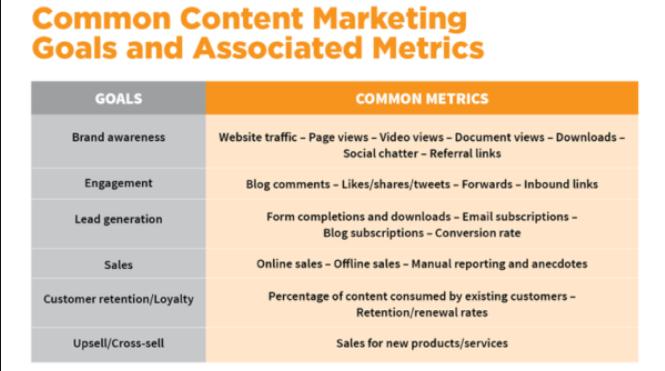5 Steps to Creating the Perfect Social Media Marketing Plan
By Mia Bacila
Having a strong social media strategy is vital if you want to set yourself apart from the competition and make an impact on social media.
73% of marketers state that social media marketing has been effective for their business, and with social platforms continuing to expand, you can expect this number to grow.

In this article, we take a look at five steps you can take to create the perfect marketing plan so you can join the ranks of marketers who are finding phenomenal success with social media.
Read on to find out more about how you can start implementing each of these steps as part of your social media strategy and start making great strides toward increasing your reach and growing your business.
Step 1: Audit Your Current Social Presence
In other words, where are you now?
Before you start strategizing about where you are headed, you need to first take a good look at where you are right now.
Listed below are a few areas that you need to look at while auditing your business’s current social media presence:
- Which social platforms are you currently active on?
- Which networks bring the most value to your business?
- What type of content resonates with your audience the most?
- Have you optimized all your networks? (this includes the bio, URL, cover images, etc.)
- How do your social media profiles compare to those of your competitors?
Conduct deep analysis of your business’s social media content across all platforms. This will help you determine your strengths and weaknesses with regard to your current social strategy.
You'll also gain a clear idea of what typically works for your business and what doesn't.
Once you have identified your most popular channels, as well as your best-performing content, you can move on to the next step which involves identifying your key success metrics.
Step 2: Identify Key Success Metrics
Where do you want to be?
Now that you have identified the most popular channels and content, it will be easier for you to come up with the key priorities, as well as a possible plan of action for creating a marketing plan that caters to your audience’s interests.
There are a lot of different tricks and techniques that you can use to create and optimize your social media strategy. However, if you don't have a way of measuring your progress, then you won't know if your marketing efforts are successful.
The metrics that you measure will depend on the goals you establish for social media, including:
- Raising brand awareness
- Driving website traffic
- Generating new leads
- Nurturing leads
- Boosting customer engagement
- Building a community around your brand
- Establishing authority and expertise
Although some of these goals are broad and subjective, you can measure the following metrics to gauge what success looks like:
- Conversion Rate
- Time Spent on Website
- Reach
- Audience Growth
- Brand Mentions
- Sentiment
- Total Shares

Certain metrics on this list may not seem as important as others, but they are still key to helping you understand the type of impact you are making on social media.
You can use tools like Ahrefs and Hootsuite to monitor your audience growth, amplify your message, build trust, nurture your customers, and inspire action.
Step 3: Define Your Social Strategy
How will you get where you’re going?
And now we come to the most important part when creating a social media marketing plan for your business, and that is defining a social strategy.
You must align everything you post on social media with your business goals so that your social marketing strategy helps you move in the direction of your ultimate objectives.
Here are some factors you need to consider during the process of defining a strategy:
1. Find Your Ideal Customer
If you haven't done so already, you need to understand and find your target customer. The better you know them, the easier it will be to sell your products and services to them.
To help you come up with a highly focused customer persona, capture the following information:
- Location
- Age
- Job Title or Career
- Finances or Income
- Buying Behavior
- Challenges, Goals, or Pain Points
- Lifestyle
- Back Story
- Most Frequented Social Media
2. Analyze the Competition
You and your competitors both have similar target audiences. So your next step is to run an in-depth competitive analysis using social analytics tools like BuzzSumo to find out what works for them so you don't have to reinvent the wheel.

As you conduct your competitive analysis, focus on the following:
- Which channels are your competitors most active on?
- Where do you see them finding the most success?
- What type of content has the most engagement?
- Which topics are they talking about the most?
- Which areas of your social strategy are you outperforming them?
3. Choose Your Brand Voice
A lot of businesses jump in and start posting on social media before determining their brand voice, and that is a mistake.
You need to find your marketing voice before everything else so that the rest of your marketing efforts are more focused, to the point, and consistent across all your social channels.
To determine your brand voice, think of your brand as a person, and then answer the following questions:
- What kind of personality does your brand have?
- What is your brand's relationship with your customers? Is it a friend, dad, coach, teacher?
- Are there other brands with personalities that are similar to yours? How are they similar?
- How would you like people to think about your brand?
When you're done with this exercise, you should have a few adjectives that accurately describe the tone and voice your social media marketing should have.
4. Choose the Types of Content to Post
This is where you brainstorm ideas and get the creative juices flowing. Plan out the different types of content that are most likely to resonate with your audience on social media.
Refer back to the research you did in earlier steps and make a note of the most popular content that your brand can share.
You should also take a look at your own blog to see if there are any popular content pieces that you can repurpose for your social media channels.
Keep in mind that the content types you choose should not only keep your audience engaged, but they should also be the types of content that will benefit your brand the most.
Here is a list of some of the most popular content types to use in social media:
- Live videos
- Video stories
- Infographics
- Images
- Testimonials interviews
- Announcements
- Quizzes
- Interactive content
Once you've chosen your types of content, you must create a list of keywords that are relevant to your niche. These will help you with the process of content creation, and you’ll also use them when sharing your content on social media.
You can use social media listening tools like HootSuite and Google Alerts to help you identify the keywords most often associated with your industry.

5. Determine a Posting Schedule
Different social media experts have different recommendations as to the best posting schedule for social media.
To find the optimal frequency for your own business, it's best to test it out for yourself.
You can follow the recommended guidelines for the different social media sites, and then check your own data, find out what works best with your own audience, and then tweak your strategy.
Make sure you also choose the best times to post when you will get the most engagement on social media.
Step 4: Create a Calendar and Start Posting
Now comes the fun part – posting content on social media. Content fuels social media and to get the best results from your marketing strategy, you must create high-quality, engaging, and share-worthy content that is targeted at your ideal customer.
Make sure your content is optimized by adding hashtags, shortening
Use a social media marketing calendar so you can get a birds-eye view of your entire strategy. This will also make it easier to keep track of everything.
Your calendar should outline the posting frequency and timing for each of your social networks. It also needs to show the topics you're going to share, as well as the content types.
You should have a healthy mix of educational, informative, and entertaining content to maintain audience interest.
Step 5: Track, Measure, and Improve
The final step involves reviewing the performance of your posts on social media so you can see what's working and what isn't.
Check the content to gauge engagement across social channels using social analytics tools like the ones mentioned in this post.
This will give you an in-depth insight into how your content is performing with your audience, and give you a good picture of your progress towards the business goals that you set at the beginning.
Continue to collect data through social listening, content shares, and analytics and use hard evidence to help you adjust and optimize your social media marketing plan.
Have you implemented any of the tips listed in this article to help you optimize your social media marketing strategy? If so, share your experience in the comments section below.

About the Author:
Jet Saini is the owner of DripDigital.com - a popular Digital Marketing blog that publishes detailed tutorials that focus on helping people to build and run a successful online business. He started his blog in 2018 and since then has helped hundreds of people reach their marketing, blogging, and SEO goals.
Learn more about Social Hire
The Social Hire team never just do social media.
The social media marketing team in our company are the best in the business at helping our partners enhance their online marketing. We create and implement original social media marketing plans that help our customers accomplish their organisational objectives and build up their online footprint.
We're an organisation that helps our clients boost their social media marketing by offering social media marketing on a monthly basis.
You might like these blog posts Four Marketing Fails To Avoid This Coming Year, 4 Ways to Give Feedback & Listen to be a Better Leader, 6 Ultimate Ways To Build A Kick-Ass Team For Your Tech Startup, and 3 Key Steps To Make Your Business More Social Media Savvy.
